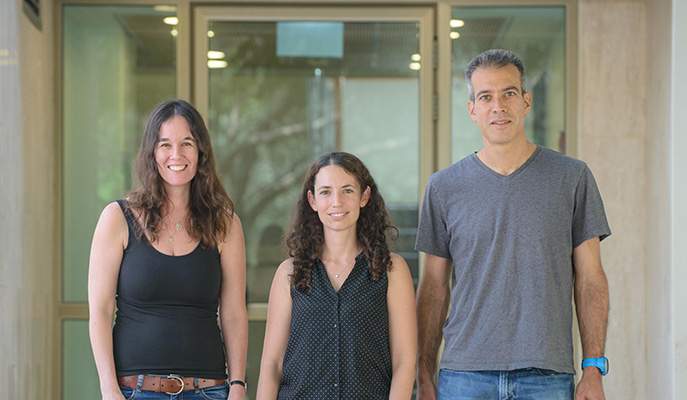Are you a journalist? Please sign up here for our press releases
Subscribe to our monthly newsletter:
Tracking protein activity levels in a cell is essential to the study of such diseases as cancer which, alongside changes in the genes, involves changes in the activity levels of numerous proteins. However, deducing function, fitness and cellular well-being from the growing number of protein level measurements is still a major challenge. For example, is a two-fold – or 100-fold – range in activity for a particular protein tolerable over the population, or does it herald differences in the way that the cells carry out their tasks? Charting this connection could transform the way we diagnose, monitor and treat patients.

"Most experiments examining ranging protein activity levels have, until now, focused on single proteins. What we did was to develop a way to systematically vary activity levels for hundreds of different proteins – all in a single experiment – and accurately measure how this affects the function of the cells,” says Leeat Yankielowicz Keren, a research student in the group of Prof. Eran Segal of the Computer Science and Applied Mathematics, and Molecular Cell Biology Departments at the Weizmann Institute of Science.
The basic idea of the experiment in Segal’s lab was to create a competition in which common bakers’ yeast cells are pitted against one another. Each cell was nearly identical to its neighbors, except for a tweak to the activity level of one of its proteins. Thousands of these genetically engineered yeast cells were grown together in lab dishes; the “winners” were those in which expression levels boosted their fitness, basically enabling the yeast to eat more, grow and divide faster.
Segal and his group developed a high-throughput genetic engineering technique that enabled them to manipulate the activity levels of different protein levels within thousands of cells simultaneously, precisely controlling, for each, the amounts of one particular protein. With 130 different activity levels – the highest 500 times the lowest – attached to 81 different protein-encoding sequences, the researchers created something like 10,000 different variations on the basic yeast cell, assigning each a “barcode” for convenient identification. With a combination of DNA sequencing techniques and an algorithm they created to reconstruct the growth rates of the various yeast cells, the team was then able to accurately map the connections between protein levels and the fitness of the cell.
The competition took place in two different “arenas.” In one, the yeast were fed the glucose sugar they prefer; in the second, they were fed a different kind of sugar, galactose. The team found that when the competition took place on the kind of sugar it prefers, the original, untouched version of the yeast cell was the overall winner – testimony to the efficiency of evolution. But on the second kind of sugar, others came out on top. These results showed that around 20% of the yeast’s natural protein activity levels are too low or too high for growing on this sugar. This could be relevant to biotechnology: The second sugar is cheaply and abundantly found in seaweed, and the yeast break it down into ethanol, which can be burned in place of fossil fuels. The study suggests that genetically engineering yeast to alter some of these protein levels could significantly increase the efficiency of this process.
The future goal is to create similar maps for protein activity levels in human cells
Mapping all the activity patterns together enabled the group to begin to see patterns in the chaos. Similar activity patterns, for example, pointed to proteins that work together. Further analysis even revealed the “math” that cells use to produce these proteins in the right ratios, for example, for the construction of complexes that require exact proportions of their various proteins.
Some of the proteins appeared to operate in a very narrow range – levels even a bit below or above this range drastically affected the fitness of the yeast. Others seemed to be much more flexible – a little or a lot did not affect the cell’s fitness, at least for the particular growing conditions. Those showing the larger ranges in the fitness competition turned out to be proteins that ordinarily vary widely from cell to cell in the natural yeast population. These findings suggest that understanding this flexibility can shed light on how activity levels are selected in evolution.
For Segal and his team, the future goal is to create similar maps for protein activity levels in human cells. Such maps could form the basis of future diagnostic techniques that would be much more refined and precise than those of today, based on blood tests that already exist or can easily be developed. They might reveal the effects of diet or medications; and they could provide early diagnosis of cancer. Keren: “We want to eventually create a ‘chart’ that doctors can use to know which protein levels to check, and what levels should, ideally, be appearing in order to prevent disease.”
Also participating in this study were Maya Lotan-Pompan and Dr. Adina Weinberger of Prof. Segal’s group, Dr. Jean Hausser and Prof. Uri Alon of the department of Molecular Cell Biology and Prof. Ron Milo of the department of Plant and Environmental Sciences.
Prof. Eran Segal's research is suppiorted by the Crown Human Genome Center, which he heads; the Else Kroener Fresenius Foundation; Donald L. Schwarz, Sherman Oaks, CA; Jack N. Halpern, New York, NY; and Leesa Steinberg, Canada